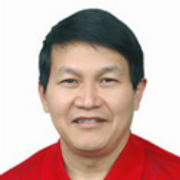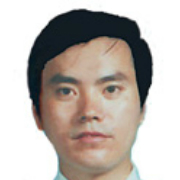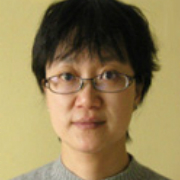- 外耳道异物
- 功能性内窥镜鼻窦手术
- 气管支气管异物
- 耳部术后复查的重要性
- 鼻咽癌侵犯三大规律被摸清
- 咳嗽的诊断与治疗指南(草案)
- 上气道咳嗽综合征
- 中华医学会耳鼻咽喉科学分会关于...
- 鼻子里长的鼻息肉,门诊手术可不...
- 面瘫
- 鼻出血有哪几种情况?
- 生理常识:为何少女月经期常有鼻...
- 宝宝听力筛查大分析
- 咳嗽的诊断与治疗指南(草案)
- ?敏性鼻炎?料大全
- 颈部肿块的评价及处理(英文)
- 治疗鼻炎癌可以做手术吗
- 请问右侧声带长息肉该如何治疗?
- 耳聋分级
- 中耳炎的误区
- 体外反搏治疗简介及适应症和禁忌...
- 咽喉炎口臭
- 你好 孩子听不很弱 我不知...
- 中耳气压伤
- 中耳炎
- 鼻炎
- 喉炎
- 咽炎
- 鼻窦炎
- 如何鉴别鼻炎与鼻窦炎
- 卫生部指出蜱虫病因初步锁定新病...
- 儿童过敏性鼻炎治疗误区三
- 鼻炎治疗误区二
- 过敏性鼻炎的误区一
- 过敏性鼻炎的治疗
- 我是过敏性鼻炎请问有好的治疗方...
- 请问一下打呼这是一种病吗
- 过敏性鼻炎的症状病因护理与治疗...
- 过敏性鼻炎的症状
- 咽炎的误区
- 慢性咽炎的病因和典型症状是什么...
- 医改
- 中华人民共和国侵权责任法
- 鼻内镜术后不同鼻腔填塞材料的效...
- 鼻内镜在小儿腺样体切除术中的应...
- 关于男声女调命名的探讨
- 颈廓清术的分类、指征及方法(英文
- 作者:顾东升|发布时间:2013-06-21|浏览量:922次
"this material was prepared by resident physicians in partial fulfillment of educational requirements established for the postgraduate training program of the utmb department of otolaryngology/head and neck surgery and was not intended for clinical use in its present form. it was prepared for the purpose of stimulating group discussion in a conference setting. no warranties, either express or implied, are made with respect to its accuracy, completeness, or timeliness. the material does not necessarily reflect the current or past opinions of members of the utmb faculty and should not be used for purposes of diagnosis or treatment without consulting appropriate literature sources and informed professional opinion." 淮安市第一人民医院耳鼻咽喉科顾东升
introduction
the single most prognostic factor for patients with squamous carcinomas of the upper aerodigestive tract is the status of the cervical lymph nodes. cure rates drop to nearly half when there is involvement of regional lymph nodes.
the first conceptual approach for removing nodal metastases was made by kocher in 1880. the classic technique of the radical neck dissection was later described by george crile in 1906. originally, this technique included removal of the submandibular salivary gland, internal jugular vein, greater auricular and spinal accessory nerves, as well as the digastric, stylohyoid, and sternocleidomastoid muscles. it was later popularized by blair (1933) and martin (1941) and the technique has remained virtually unchanged since. martin believed in the concept that cervical lymphadenectomy for cancer was inadequate unless all the lymph-node-bearing tissues of one side of the neck were removed. this, he felt, was impossible without the removal of the spinal accessory nerve, the internal jugular vein, and the sternocleidomastoid muscle.
the 1960s and 70s marked a significant change in the attitude towards the surgical treatment of head and neck malignancies. this change was exemplified by the evolution of conservation laryngeal surgery where preservation of tissue and function was considered in the development of new surgical techniques and treatment. similarly, this attitude began to infiltrate those developing new therapeutic modalities for the treatment of the neck. in 1953, pietrantoni, a strong advocate of bilateral elective neck dissection, recommended sparing the spinal accessory nerves and at least one internal jugular vein. this break with surgical tradition was first limited to elective neck dissections, but was later extended to therapeutic dissections when lymph nodes were enlarged but still mobile. in 1967 bocca and pignataro described an operation that removed all of the lymph node groups but spared the sternocleidomastoid muscle, the spinal accessory nerve, and the internal jugular vein. bocca, a staunch opponent of conservative nodal stripping indicated the complete effectiveness of his surgical technique, which he described in the semon lecture to the royal society of medicine in 1975: “a complete dissection of the lateral cervical space, anatomically confined by a fascial envelope, and itself containing the major cervical lymphatics”. he called this technique the “functional neck dissection”. he followed nearly 400 patients with n0-n2 treated with this technique. these patients showed no difference in survival from those patients treated with radical neck dissection. since this time a multitude of modified techniques have evolved to more specifically address early stage neck metastases. in 1989, medina suggested that lymphadenectomies be categorized as comprehensive, selective, or extended. robbins et al. in 1991 used the term “selective” to distinguish patients who had one or more nodal groups preserved. although these modifications have refined surgical treatment of the neck, it has also resulted in a nomenclature system that is confusing and non-uniform. in response to this confusion, in 1991 robbins et. al. published the official report of the academy’s committee for head and neck surgery and oncology standardizing neck dissection terminology. this terminology was adopted by the american academy of otolaryngology-head and neck surgery and is the current terminology used by the american joint committee on cancer (1997). to date there is continued debate and discussion as to the indications for these different neck dissections in treatment of the neck for various types and stages of head and neck malignancies.
anatomy
a firm grasp of the applied and basic anatomy of the neck is paramount in providing appropriate surgical treatment to patients with head and neck cancer. below is thorough, but by no means exhaustive, discussion of the anatomic structures that must be considered when performing a neck dissection.
platysma muscle
origin and insertion. the platysma muscle is a broad sheet of muscle arising from the fascia covering the upper parts of the pectoralis major and deltoid muscles and contained in the superficial cervical fascia; its fibers cross the clavicle, and proceed obliquely upwards and medially in the side of the neck. the anterior fibers interdigitate, with the fibers of the opposite muscle below and behind the mental symphysis; succeeding fibers insert into the lower border of the body of the mandible more anteriorly while more laterally and posteriorly they cross the mandible and insert into the skin and subcutaneous tissue. particularly in the area of the corner of the mouth the platysma interdigitates with the facial musculature.
nerve supply. the platysma is innervated by the cervical branches of the facial nerve.
function. the platysma muscle has four functions: (1) it wrinkles the surface of the skin of the neck in an oblique direction, and diminishes the concavity between the jaw and the side of the neck; (2) assists the facial muscles of expression in depressing the angle of the mouth; (3) increases the diameter of the neck during rapid respiration; (4) assists with venous return by increasing negative pressure in the superficial veins of the neck.
surgical considerations. raising skin flaps during a neck dissection is carried out in a subplatysmal plain. the purpose of this technique is to provide better blood supply to the flap. laterally the fibers of the scm may be confused for the platysma. the fibers of the platysma run anterosuperiorly from its origin while the fibers of the scm run posterosuperiorly.
sternocleidomastoid muscle (scm)
origin and insertion. the scm passes obliquely in the neck forming an “x” with respect to the more superficial fibers of the platysma muscle. it is invested in the superficial layer of the deep cervical fascia. it consists of two heads, one that originates from the medial third of the clavicle (clavicular or lateral head) and another which originates from the manubrium sterni (sternal head). these two join together and insert onto the mastoid process of the temporal bone.
nerve supply. the scm is innervated by the spinal accessory nerve (cn xi). the entire nerve may traverse the muscle. it also receives proprioceptive innervation by cervical spinal nerves from the cervical plexus
blood supply. there are three sources of blood supply to the scm: (1) the occipital artery or directly from the external carotid artery, (2) the superior thyroid artery, and (3) the transverse cervical artery
function. when one scm contracts, the head rotates away from the side of the contracting muscle and tilts towards the ipsilateral shoulder. both muscles are act together against gravity to draw the head forwards and help to flex the cervical part of the vertebral column. this is a common movement in feeding. if the head is fixed, they assist in elevating the thorax in forced inspiration.
surgical considerations. (1) when raising skin flaps care should be taken to leave the superficial layer of deep cervical fascia overlying the scm down. this will later be the dissection plain for unwrapping the scm and will provide attachment to the contents of the posterior triangle for en bloc resection. (2) firm lateral retraction near the superior aspect of the scm and upwards retraction on the mandible allow for good exposure in locating the spinal accessory nerve and in dissection of lymph nodes in the submuscular recess.
omohyoid muscle
origin and insertion. the omohyoid muscle consists of two bellies (inferior and superior). the inferior belly arises from the upper border of the scapula near the scapular notch. from there it inclines forward and slightly upwards across the lower part of the neck dividing the posterior triangle into an upper, occipital and lower, supraclavicular triangle. it passes deep to the scm and ends in the intermediate tendon, which usually lies adjacent to the internal jugular vein, opposite the arch of the cricoid cartilage. this tendon is ensheathed by a band of deep cervical fascia, which is attached to the clavicle and first rib and is responsible for the angled appearance the inferior belly makes with the superior. the superior belly extends from the intermediate tendon and passes nearly vertically close to the lateral border of the sternohyoid muscle and attaches to the lower border of the hyoid bone lateral to the insertion of the sternohyoid muscle.
nerve supply. nervous innervation to the omohyoid muscle comes from branches of the ramus superior of the ansa cervicalis (c1-c3).
blood supply. inferior thyroid artery
function. the omohyoid depresses the hyoid bone after is has elevated during swallowing. it is speculated that it tenses the deep cervical fascia during deep inspiration to prevent collapsing of soft tissues.
本帖来自于中国权威执考论坛:苗圃医学社区 http://www.miaopu520.cn
TA的其他文章:




